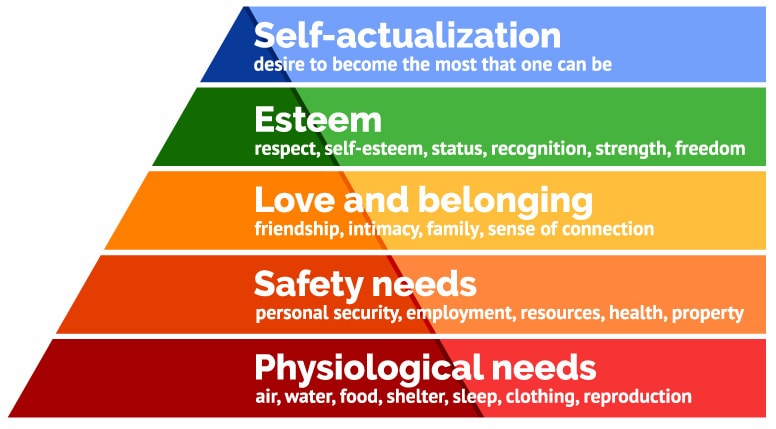Writing about saying No came to me after a 1 on 1 session with my colleague.
She was living an abusive situation with her roommate.
So I asked her: you are clearly unhappy. Why you don’t say No?
Simple for me to say; complicated for her to do.
As I’m getting older, saying No became easier.
But I remember in my twenties, saying no to my boss or friends was harder.
So I made some researchers. I was hoping to find a way to make saying No easier.
This is how I came across “The power of a positive No” of William Ury.
Most of what I’m about to share with you is from this book.
I discovered 2 unexpected things:
- That, behind our Nos, are hidden our deepest values
- How to say no in a positive way
In a life where we are overwhelmed and overloaded, saying no is a skill we all must learn.

Why saying No is hard
Who is William Ury
Apart from being a bestselling author, William Ury is an expert negotiator. He’s been through many challenging negotiations. In one of them, he had to mediate between Hugo Chavez and the political opposition when tensions were high.
This gives you a little perspective on Ury. His job is not to say “No”; it’s getting people to say “Yes”.
During a breakfast with the famous investor Warren Buffet, he learned a lesson. He understood that the ability to say “No” is as important as getting people to say “Yes”. Here’s what Warren said:
“I sit there all day and look at investment proposals. I say No, No, No, No, No, No- until I see one that is exactly what I am looking for. And then I say Yes. All I have to do is say Yes a few times in my life and I’ve made a fortune.”
Why saying no is challenging
In his book ‘Essentialism’, Greg Mckeown mentions two main reasons why saying No is challenging.
The first one is the lack of clarity.
Most of us rush to say Yes because we are unclear about what is important to us.
When we know our deepest values and priorities, it becomes easier to say No.
But when we don’t, we are defenseless. We become like a tree without roots. A little blow can bring us down.
The second reason is the fear of social awkwardness.
As humans, we are wired to live in a tribal way. We want to stay part of a group.
So when someone asks us something, it feels uncomfortable to refuse. Their is a risk be excluded from the group.
We are no different in our reaction to the tribes who lived a thousand years ago.
The only difference is that saying No is not anymore, a matter of life or death. At least, in most cases.
3 approaches to No situations

When faced with unwelcomed solicitation, unfair situation, or inappropriate behavior, we generally have 3 responses.
Those responses illustrate the tension between our power/right to say no and the maintenance of the relationship.
The first response is to accommodate.
We don’t want to say Yes, but we do it out of fear. We don’t want to feel guilty.
This kind of Yes sacrifices our best interest. It’s unhealthy.
Sooner or later, we start feeling resentful- both at the other person and to ourselves.
The second response is to attack.
We feel angry at the other person to make such a request.
We find the demand unreasonable or frustrating. So we say No in a poorly way, damaging the relationship at the same time.
The third response is to avoid.
We afraid to offend or we don’t want to be angry, so we don’t say anything.
Instead of saying No to the unwelcomed request or inappropriate behavior, we pretend it doesn’t exist. We’re hoping it will disappear by itself.
3 steps for a positive No
To avoid the trap of these 3 common approaches to No, William Ury came up with a 3 steps process that protects our interests and respects the relationship.
Say Yes to your interests
The first Yes is not one that comes out of fear. It’s a deep Yes rooted in what we really care about.
Instead of saying an angry No or unwanted Yes, we stop and interrupt our reaction.
We observe what’s happening inside us. What emotion do we feel?
Emotions are a great indicator of what matters to us.
Why do we feel what we feel? This question can help us uncover our interests.
What are the needs at risk here? As humans, we share the same needs. They are summarized in Maslow’s pyramid of needs.

What are our values? Our beliefs?
We can change our perspective about a No situation. We can turn them into an opportunity to uncover ourselves, our interests, and what we stand for.
This is what the first Yes is about- making roots that will help you stand tall later on.
Assert your No

You will need confidence and power to affirm your first Yes.
You don’t know how the other person will take your No.
So it is necessary to have a plan B in case the other person doesn’t cooperate.
Now it’s time to brainstorm and think about the worst-case scenario.
Here you want to suspend any criticism. You need to be creative and consider all possibilities.
Can you survive without the relationship? How can you neutralize the other person’s behavior? Do you need allies to have more power?
The stoics call this exercise the premeditation of evils.
It consists in visualizing the worst-case scenarios. You review all the fears that prevent you from taking action. This allows you to overcome paralysis and to take action.
Tim Ferriss’ fear-setting exercise is inspired by this stoic practice. I mentioned it in the post ‘How to overcome the fear of Responsibility’.
Basically, you ask yourself: what if this happens?
Then, you think of a way to prevent it from happening, or how to fix it if it does happen.
Propose a Yes

At this stage, you announce the Yes of reconciliation.
The goal is to make it easier for the other person to accept your No.
So, your Yes must be founded on respect.
Respect means to look again; to notice with attention.
The way to open the hearts and minds of people is to respect them.
And we do that by listening and acknowledging.
Actively listening means seeking to understand the other person.
It’s not about preparing an answer while the other person is talking.
When we really listen, we can discover the underlying meaning behind what people say.
The other element of respect is acknowledgment.
Acknowledgment doesn’t mean agreeing with the other person’s point of you.
It simply means recognition. We recognize that the other person has needs, interests, and power.
When we respect ourselves, our core values, we can then show respect to others.
After that, it becomes easier to come up with a positive No. A No that doesn’t reject, but conciliates.
Examples

Here are some examples of the Yes-No-Yes process.
1- No smoking sign
In order to accommodate the pleasure of all our guests (Yes), this is a non-smoking room (No). We ask that you smoke in our smoking room, the great outdoors! (Yes)
2- A person pressing you with personal questions
“It really embarrasses me when you ask such personal question” (Yes)
“Would you please not do it?” (No)
“And when I’m ready to talk about it, I’ll be sure to let you know” (Yes)
3- In preparing for his book “Money Master The Game”, Tony Robbins asked Warren Buffet for an interview about investing.
His answer was:
“Tony, I’d love to help you (Yes), But I’m afraid (No), I’ve already said everything a person can say on the subject (Yes).”
Conclusion
Our biggest mistake when we want to say No is to start with No.
Start with Yes rooted in your beliefs and principles.
By doing so, we give the other person a chance to understand our decision.
But to say No confidently, we need more than hoping for the best, we also need to prepare for the worst.
In the end, there’s no guarantee that the other person accepts your No.
And finally, come up with a new Yes.
A Yes that respects your interests and other people’s needs.
Saying No is a universal problem. It creates conflicts and tensions in all areas of life.
I believe that the 3-steps to No is an answer to this problem. It worth knowing and trying.
